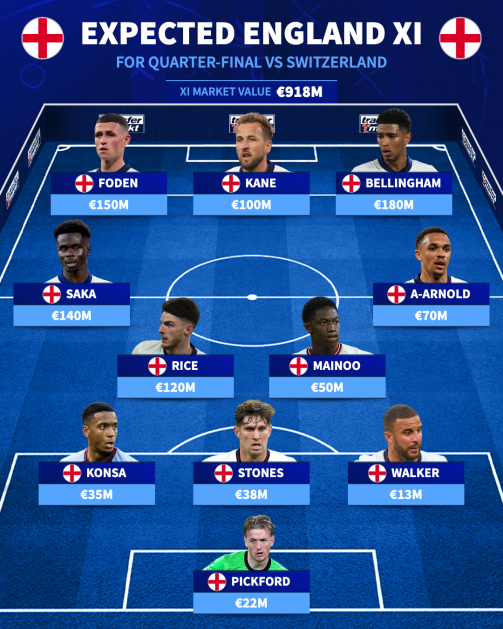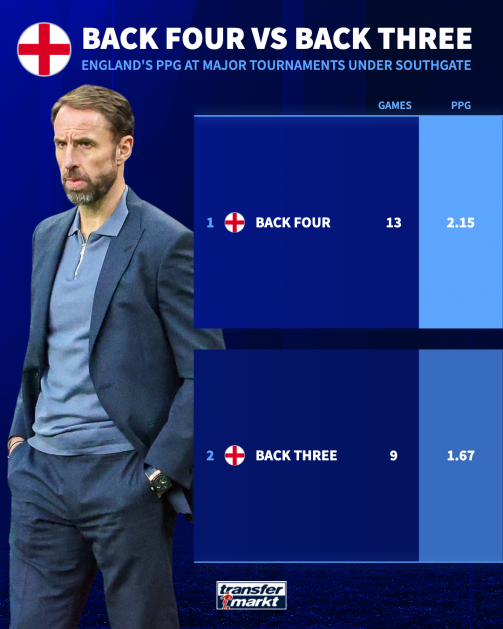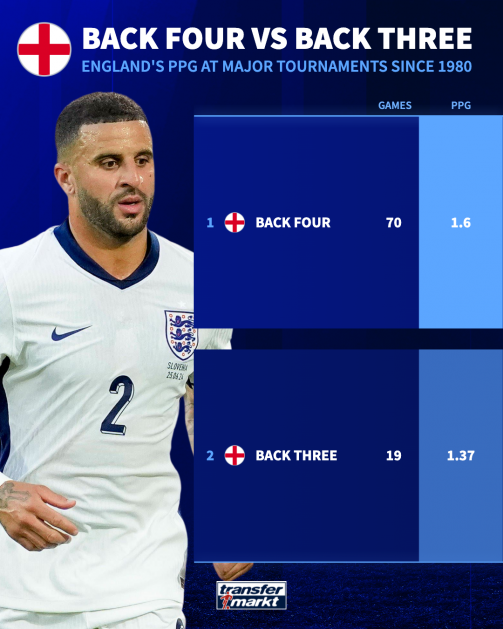Marc Guéhi suspended

©TM/IMAGO
England may be in the quarter-finals of Euro 2024, but they certainly haven’t pulled up any trees getting there. The Three Lions face Switzerland in Düsseldorf this Saturday, having scored just two goals in the group stage, and then having needed a last minute Jude Bellingham overhead kick equaliser and extra-time to get past Slovakia in the round of 16. It’s now being reported that England’s lacklustre displays plus the suspension to centre-back Marc Guéhi will force Gareth Southgate to switch things up and not only change personnel, but formation too.
England’s lack of balance and lack of attacking threat down the left side of their attack has been there for all to see so far at this Euros. The inability to get the best out of star players such as Phil Foden has been a huge kryptonite in the Three Lions’ performances to date. Moving to a back three looks like the move Southgate will make to try and combat this. Centre-back John Stones believes the move could help the team look more fluid, ““We’ve done it in previous tournaments. I remember [beating] Germany [during] the last Euros. I think it’s a great thing to have in the locker if we need to play that system. It’s something that shouldn’t be underestimated that we can do it so easily and seamlessly, and kind of click together.”

Aston Villa’s Ezri Konsa is expected to replace Marc Guéhi on the left side of the England back three alongside Stones and Kyle Walker. Who will start as the wing-backs seems to remains slightly undecided, although Bukayo Saka and Trent Alexander-Arnold look the most likely. Here at Transfermarkt, we have crunched the numbers to see how successful England have been with a back three and a back four both under Southgate’s stewardship, and historically at major tournaments.
Back three vs back four: England stats with both formations compared
When Southgate began his reign of managing England at major tournaments back in the 2018 World Cup, the Three Lions lined up with a back three for the entire tournament. England made it to the semi-finals before they were knocked out by Croatia, and from then on it’s been mainly a back four Southgate has deployed – bar the win vs Germany and the final defeat to Italy at Euro 2020. As you can see in the graphic below, under Southgate, England have a strong record of 2.15 points per game (PPG) in major tournaments when playing a back four from 13 matches. With a back three just 1.67ppg from nine games.

Before Southgate became boss England hadn’t set up with a back three at a major tournament for 20 years. The 1998 World Cup was the last time the Three Lions used that formation before the 2018 World Cup in Russia. When we assess England’s historical record (going back to 1980 when Transfermarkt have the statistics for formations played) playing a back three, we can see that in 19 games England have a record of just 1.37ppg. With a back four in that same time period, the Three Lions boast a record of 1.6ppg from 70 matches.

So largely historically a back three hasn’t worked well for England, but their best success with the formation has come under Southgate. The victory against Germany in the round of 16 three years ago and the run to the semi-finals in 2018 may boost some confidence in the switch of set-up. After the first four games, something certainly needed to change. Southgate and England fans alike will hope the switch will increase fluidity in the team, and put more key players in more natural positions, therefore enhancing their output. Opponents Switzerland have also set up with a back three so far at Euro 2024, so England will match them up this Saturday.

